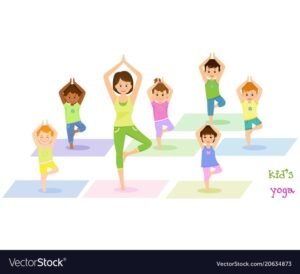
ISSN-2348-8824(Print), 3048-5061 (Online)
RNI No: HARENG/2021/35200
Vol, XIV, No. 1 August 2023 – Nov-2023
Chetan Malik
ABSTRACT
Play is an essential component of a child’s development, especially in the age group of 4-10. It promotes not only physical fitness but also enhances cognitive, emotional, and social skills. In this article, we will explore the significance of play and its impact on students’ health and overall well-being in school. We will discuss various activities such as yoga, aerobics, athletics, and stamina-building exercises that can contribute to the holistic development of children. By engaging in these activities, students can improve their physical fitness, enhance their concentration and focus, develop teamwork and social skills, and manage stress effectively. The primary goal is to emphasize the importance of incorporating play and physical activities into the school curriculum to promote optimal health and well-being in students.
Keywords: play, health, students, school, yoga, aerobics, athletics, stamina-building, holistic development
- 1. INTRODUCTION
Play is a fundamental aspect of childhood. It is through play that children learn and develop various skills necessary for their overall growth. In the age group of 4-10 years, play becomes even more crucial as children are in their formative years, laying the foundation for their future physical, mental, and emotional well-being. Engaging in play not only improves physical fitness but also contributes to cognitive development, emotional regulation, and social interactions.
2. Physical Benefits of Play

Source: https://www.vectorstock.com/royalty-free-vectors/children-playing-clipart-vectors
Regular physical activity is essential for promoting good health and preventing various diseases. In school, incorporating activities such as yoga, aerobics, athletics, and stamina-building exercises can have numerous physical benefits for students. These activities help improve cardiovascular health, enhance muscle strength and flexibility, develop coordination and balance, and promote overall physical well-being.
2.1 Yoga for Flexibility and Mindfulness

Yoga is a practice that combines physical postures, breathing exercises, and meditation. It can help students improve flexibility, balance, and posture. Additionally, yoga fosters mindfulness and diminishes stress, enabling students to regulate their emotions and enhance their concentration within the school environment.
2.2 Aerobics for Cardiovascular Fitness
Aerobic exercises such as dance routines, jumping jacks, and running can improve cardiovascular health. These activities increase heart rate, strengthen the heart and lungs, and enhance overall endurance. By incorporating aerobics into the school curriculum, students can develop a lifelong habit of regular physical activity.
2.3 Athletics for Strength and Coordination
Engaging in athletic activities such as running, jumping, and throwing can help students develop strength, coordination, and agility. These activities also foster teamwork and sportsmanship as students participate in competitive or cooperative games.
2.4 Stamina-Building Exercises for Endurance
Stamina-building exercises such as interval training, circuit training, and endurance activities can enhance students’ endurance levels. These exercises aim to increase the capacity of the cardiovascular and respiratory systems, allowing students to sustain physical activity for longer periods.
- Cognitive Benefits of Play
Play not only promotes physical fitness but also has a significant impact on cognitive development. Through play, students can enhance their problem-solving skills, creativity, and critical thinking abilities.
3.1 Problem-Solving Skills
Play provides opportunities for students to face challenges and solve problems. Whether it’s a puzzle, a strategic game, or a role-playing scenario, children learn to think critically and find solutions to overcome obstacles. This skill is transferable to various academic subjects and real-life situations.
3.2 Creativity and Imagination
Engaging in imaginative play allows students to explore their creativity and imagination. Whether it’s building with blocks, creating artwork, or engaging in pretend play, children develop their ability to think outside the box, express themselves, and explore different perspectives.
3.3 Cognitive Flexibility
Play involves adapting to different roles, rules, and situations, fostering cognitive flexibility in students. By engaging in various play activities, students learn to adapt to changing circumstances, and consider different approaches to problem-solving.
- Emotional and Social Benefits of Play
Play has a profound impact on emotional and social development in students. Through play, children learn to regulate their emotions, develop empathy, and build relationships with their peers.
4.1 Emotional Regulation
Play provides a safe space for students to express and regulate their emotions. Whether it’s engaging in physical activities to release pent-up energy or engaging in imaginative play to explore different emotions, play helps students develop emotional intelligence and self-regulation skills.
4.2 Social Interaction and Collaboration
Play encourages social interaction and collaboration among students. Team sports, group games, and cooperative play activities promote teamwork, communication, and cooperation. Students learn to work together, respect each other’s ideas, and develop strong interpersonal skills.
4.3 Conflict Resolution
Play also offers opportunities for students to learn conflict-resolution skills. In competitive play scenarios, students learn to navigate disagreements, negotiate, and find mutually beneficial solutions. These skills are vital for healthy relationships and effective communication.
- Incorporating Play into the School Curriculum
To maximize the benefits of play and promote the health and well-being of students, it is crucial to incorporate play activities into the school curriculum. Schools can allocate dedicated time for physical activities, integrate play-based learning approaches, and provide access to various resources and facilities.
5.1 Physical Education Classes
Physical education classes should be an integral part of the school curriculum, providing students with structured physical activities and opportunities to develop their physical fitness, motor skills, and sportsmanship.
5.2 Play-Based Learning
Incorporating play-based learning approaches into academic subjects allows students to apply their knowledge in practical and engaging ways. This method promotes active learning, critical thinking, and problem-solving skills.
5.3 Access to Facilities and Resources
Schools should provide access to well-equipped play areas, sports facilities, and resources for students to engage in a wide range of physical activities. This includes access to equipment, outdoor spaces, and trained instructors or coaches.
- CONCLUSION
Play is not just a recreational or leisure activity; it is a vital component of a child’s development, especially during the school years. By integrating activities such as yoga, aerobics, athletics, and stamina-building exercises into the school curriculum, students can reap the numerous benefits of play. These activities contribute to physical fitness, cognitive development, emotional regulation, and social skills. It is essential for schools to recognize the importance of play and prioritize its inclusion in the education system. By doing so, we can ensure the holistic development and well-being of students in the age group of 4-10.
ABOUT THE AUTHOR
Chetan Malik is an experienced and dedicated Physical Education teacher at Salwan Public School, Rajendra Nagar. He has an impressive 17-year tenure. He holds a Master’s Degree in Physical Education from Chaudhary Charan Singh University, Meerut. Throughout his career, Mr. Malik has demonstrated a passion for promoting health and fitness among students. With his extensive knowledge and expertise, he strives to create engaging and inclusive physical education programs that cater to the diverse needs of his pupils. Known for his friendly and approachable demeanor, he fosters a positive learning environment, inspiring students to embrace an active and healthy lifestyle. He can be reached at malik.chetan@salwanpublicschool.com.








